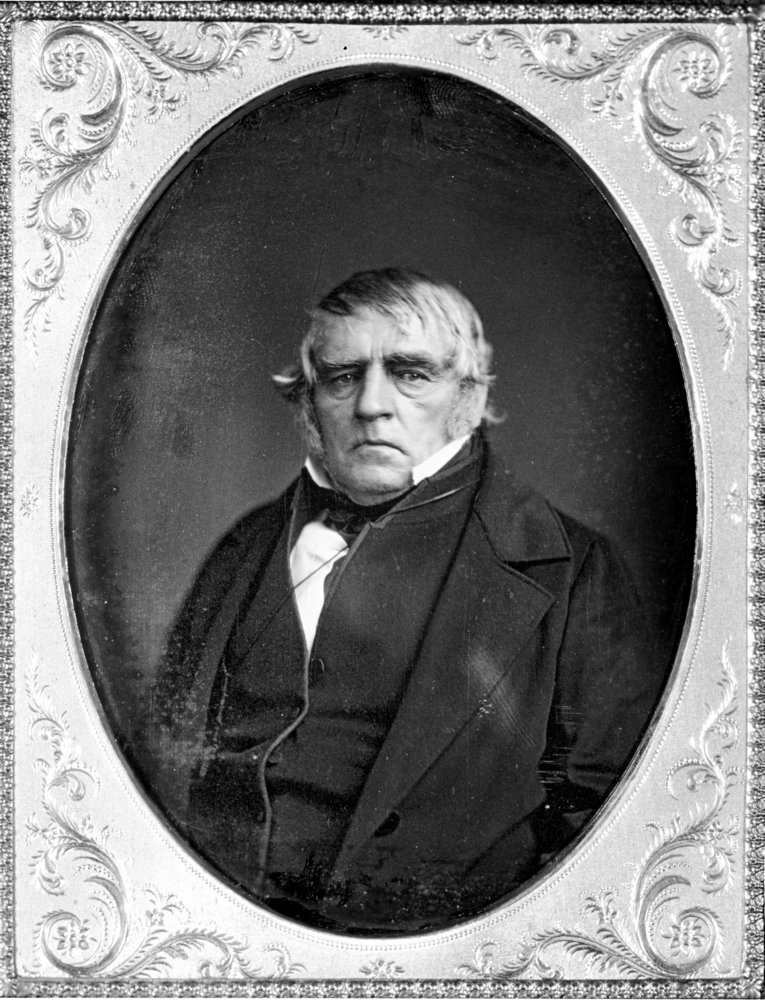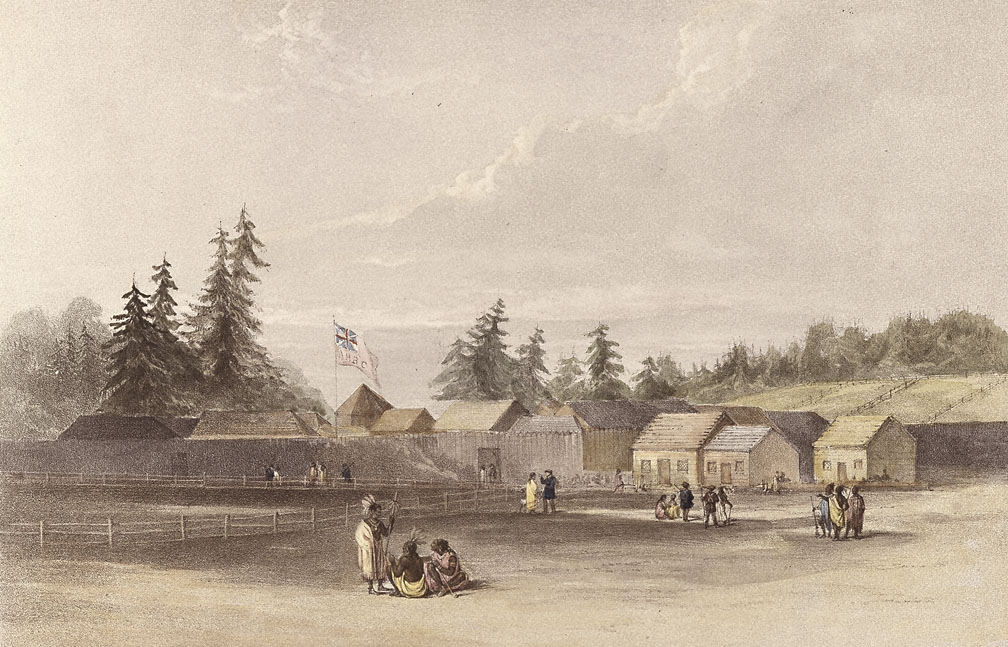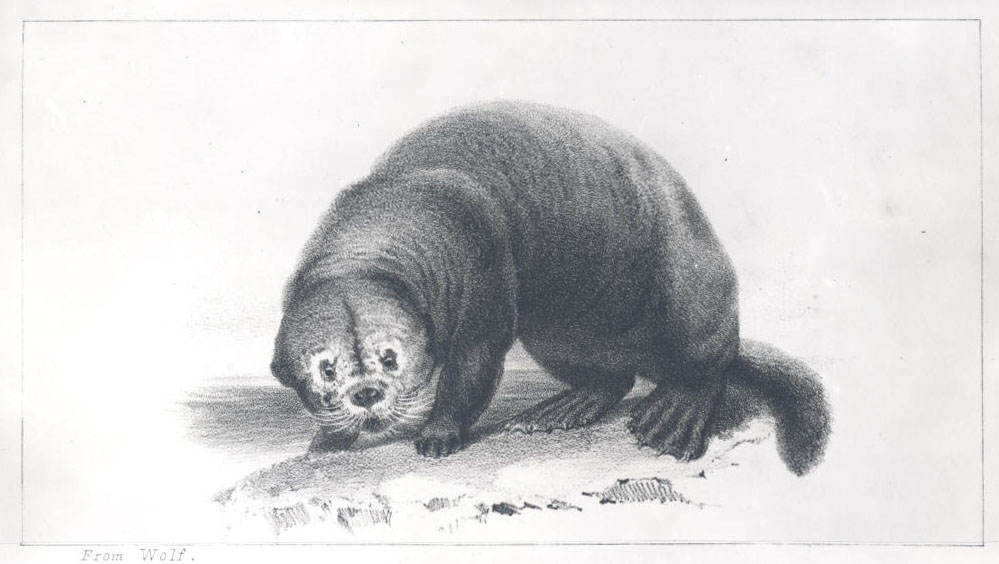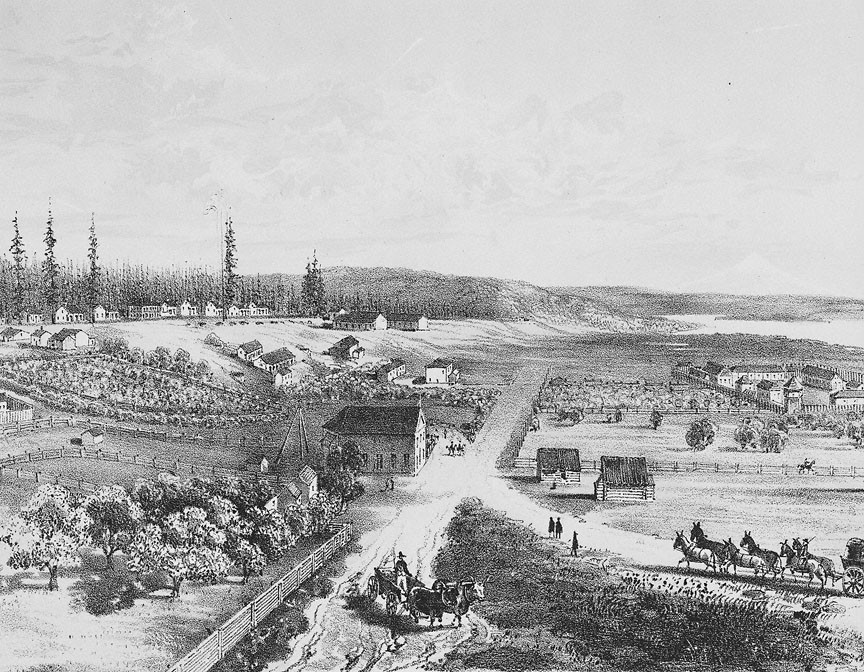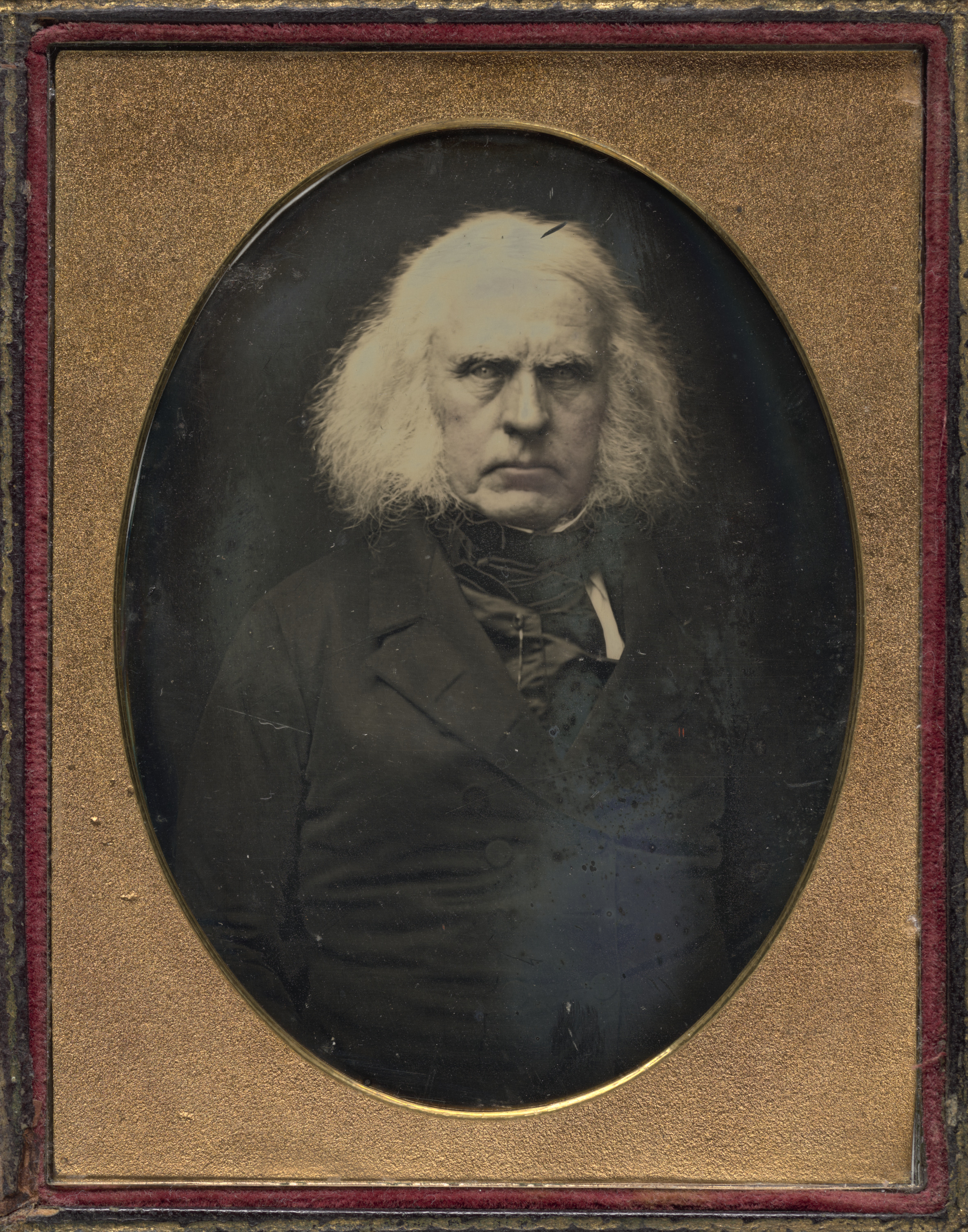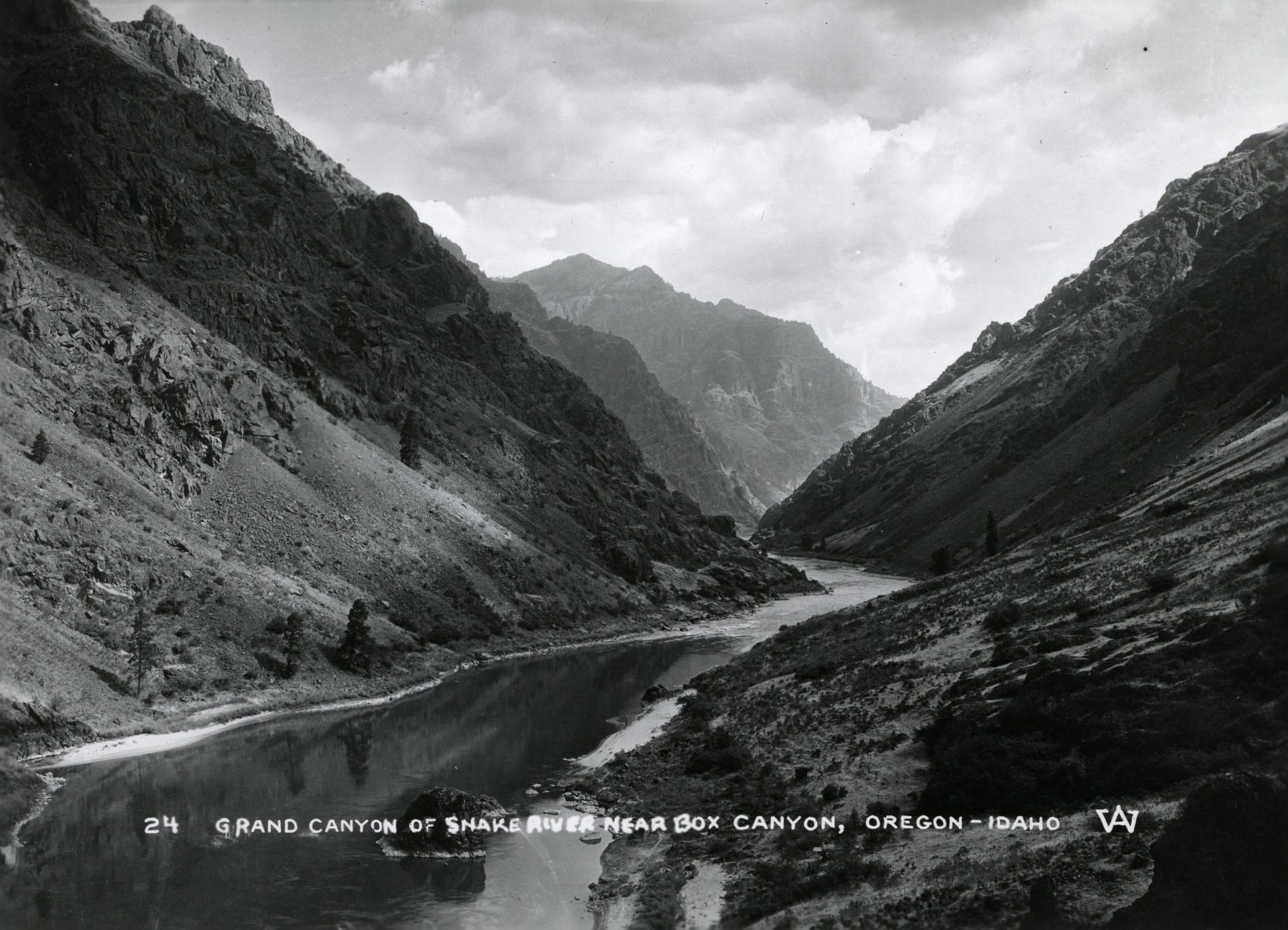More than any other figure during the years of the Pacific Northwest's beaver trade, Peter Skene Ogden epitomized that endeavor's transcontinental reach, its rapacious competition for wealth, and its relentless challenge to the stamina and skill of those in charge of trapping brigades. Ogden remained a central player throughout the period and achieved renown as an explorer of the Far West.
Peter Skene Ogden was born in 1790 in the city of Quebec, Lower Canada, to Isaac Ogden and Sarah Hanson. Formerly a prominent jurist in the colonial port of Newark, New Jersey, Isaac Ogden married the daughter of a wealthy family. The couple was seemingly set on a course to greater status when the American Revolution intervened. Having cast their lot with the Crown, the Ogdens fled to the Tory stronghold on Manhattan Island and then joined the 1783 exodus of dispossessed Loyalists to Britain. With Isaac Ogden's 1788 appointment to a judgeship in Quebec, the family sailed to Canada.
After the family moved to Montreal in 1796, young Peter received tutoring meant to prepare him for the law. At the time, Montreal was at its height as a bustling entrepôt of the beaver trade. Spurning a legal career, in 1810 Ogden won a clerkship with the North West Company (NWC) and became a fiercely loyal, even brutal, partisan of the firm—at the time embroiled in a bitter contest with the London-based Hudson's Bay Company (HBC) for control of the vast trapping grounds south and west of Hudson Bay.
Ogden was first posted to Île-a-la-Crosse in northern Saskatchewan, where his star rose rapidly. Already bilingual in English and French, he quickly acquired Native languages as well. His violent bullying of opponents, however, made the short, but burly Ogden notorious. In 1818, after being implicated in the death of an Indian trapper, Ogden was sent farther west, across the continental divide to Spokane House on the Columbia River.
By now an experienced trader, Ogden soon married Julia Rivet, a Meti/Nez Perce (sometimes known as Flathead or other Salish). When the NWC and the HBC finally made peace, joining forces as an enlarged Hudson's Bay Company in 1821, Ogden's earlier actions counted against him. Only after sailing to London to plead his own case was he grudgingly granted admission into the new HBC. Ogden quickly matured from his unpromising beginning as a young hellion—"humorous, honest, eccentric, law-defying...the terror of Indians," wrote one fellow Nor'Wester—into an astute and tireless workhorse throughout his more-than three decades in the Oregon Country, the HBC's Columbia Department.
Peter Ogden's major importance to Oregon history is his contribution to geographic knowledge gained as chief trader in charge of the six consecutive Snake Country Brigades that operated out of Fort Vancouver between 1824 and 1830. The purpose of these far-ranging expeditions was twofold: first to trap out the streams of the vaguely defined Snake Country of the intermountain West, creating a "fur desert" to discourage American trappers from continuing west toward the Columbia, and second to explore the rivers and mountains of the vast, unknown region.
Although Ogden's first brigade ended in near disaster, owing to the belligerence of American fur-traders he encountered and the defection of many of his own men to the Yankees, his trappers became the first non-Indians to sight Great Salt Lake. Subsequent expeditions yielded high profits for the company, as well as much more raw data for cartographers in London. Ogden's second, third, and fourth forays thoroughly traced the drainage systems of the Snake River Plain, southwestern Oregon and northern-most California, and central and southeastern Oregon. Because the route of the 1826-1827 brigade was misinterpreted for many years, only recently has Ogden been credited not only with documenting Mount Shasta and the Klamath River but also with the first crossing of strategic Siskiyou Pass, which links California and Oregon, as well as with exploring the Rogue and Umpqua rivers.
During the fifth trip, Ogden traced the entirety of Nevada's Humboldt River and discovered other features of the northern Great Basin. His final expedition, in 1829-1830, took him far to the south, reaching the lower Colorado River and crossing the Mojave Desert before turning north through California's Central Valley and across eastern Oregon to Fort Nez Percé. (On the boat trip back to Fort Vancouver, Ogden's journal for his longest trek was lost to the waters of the Columbia.) Peter Ogden's Snake Country peregrinations equal, if not surpass in importance, those of his American contemporary Jedediah Smith.
For the next decade and a half, Ogden served at key posts in the Columbia Department's northern region, New Caledonia. Promoted to chief factor, he returned almost yearly to the Fort Vancouver headquarters. In 1841, Ogden, a jocose raconteur, made a strong, favorable impression on visiting American naval explorer Lt. Charles Wilkes, who was leading the United States geographical survey on the Pacific Coast.
In 1844, Ogden traveled to London to advise his superiors and the British government on settling the Oregon Question. He returned to Fort Vancouver in 1845, but the number of American settlers on both sides of the lower Columbia by that time helped tip the balance in 1846 to a final international border drawn at the 49th parallel, much farther north than had been intended. With Dr. John McLoughlin's retirement as HBC chief factor that year, it fell to Ogden to hammer out arrangements with the Americans for the company's posts and operations south of the boundary.
In late 1847, Chief Factor Ogden's experience with Native people proved crucial in the release of forty-seven American women and children captured by Cayuse Indians during the murders at the Whitman mission. After racing upriver, Ogden challenged the Cayuse leaders' manhood for letting their reckless young men control events, and he successfully bartered the captives' lives for several boatloads of HBC goods. For this act, Ogden earned the praise of American settlers.
In ill health, Ogden left Fort Vancouver for the last time in the summer of 1854, removing across the Columbia to Oregon City, where he died in September of that year. His grave is in Oregon City's Mountain View Cemetery.
-
![]()
Daguerreotype of Peter Skene Ogden.
Oreg. Hist. Soc. Research Lib., OrHi 707
-
![]()
Peter Skene Ogden, c. 1852.
Oregon Historical Society Research Library OrHi 406
Related Entries
-
![Fort Vancouver]()
Fort Vancouver
Fort Vancouver, a British fur trading post built in 1824 to optimize th…
-
![Fur Trade in Oregon Country]()
Fur Trade in Oregon Country
The fur trade was the earliest and longest-enduring economic enterprise…
-
![Hudson's Bay Company]()
Hudson's Bay Company
Although a late arrival to the Oregon Country fur trade, for nearly two…
-
![Jedediah Strong Smith (1799-1831)]()
Jedediah Strong Smith (1799-1831)
Jedediah Strong Smith was one of the first and, arguably, the most impo…
-
![John McLoughlin (1784-1857)]()
John McLoughlin (1784-1857)
One of the most powerful and polarizing people in Oregon history, John …
-
![North West Company]()
North West Company
First organized in 1779 by a small group of Canadian fur traders based …
-
![Snake River]()
Snake River
The Snake River has its headwaters at an elevation of 8,200 feet on the…
Related Historical Records
Map This on the Oregon History WayFinder
The Oregon History Wayfinder is an interactive map that identifies significant places, people, and events in Oregon history.
Further Reading
Cline, Gloria Griffen. Peter Skene Ogden and the Hudson's Bay Company. Norman: University of Oklahoma Press, 1974.
LaLande, Jeff. First over the Siskiyous: Peter Skene Ogden's 1826-1827 Journey through the Oregon-California Borderlands. Portland: Oregon Historical Society Press, 1987.
Reid, John Phillip. Contested Empire: Peter Skene Ogden and the Snake River Expeditions. Norman: University of Oklahoma Press, 2002.
Ogden, Peter Skene papers, circa 1820-1867. Mss 91. Oregon Historical Society Research Library, Portland.



